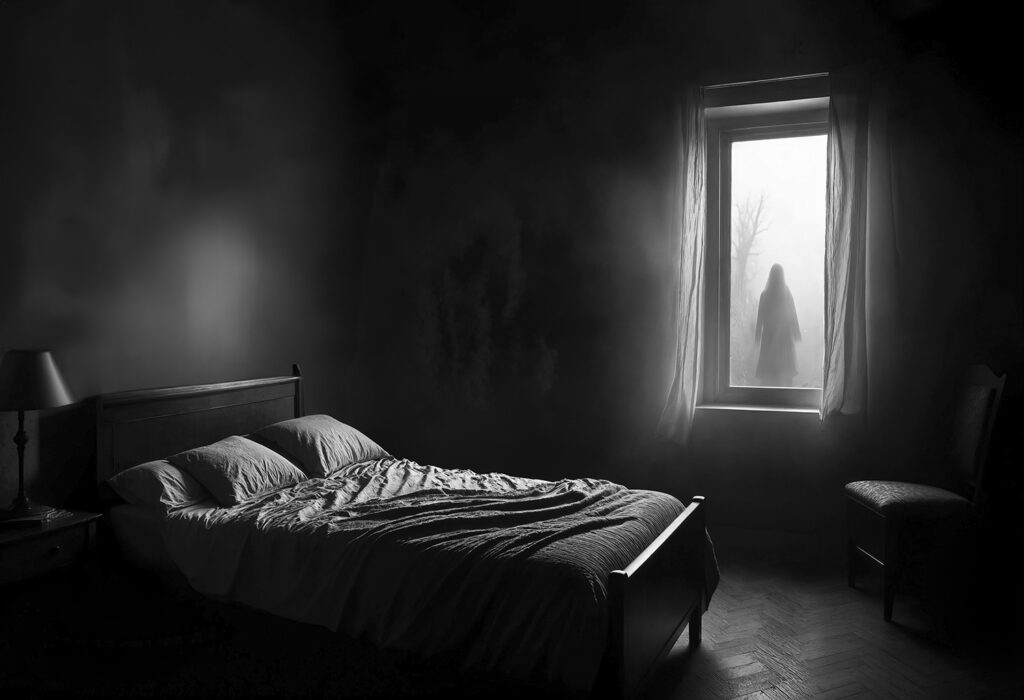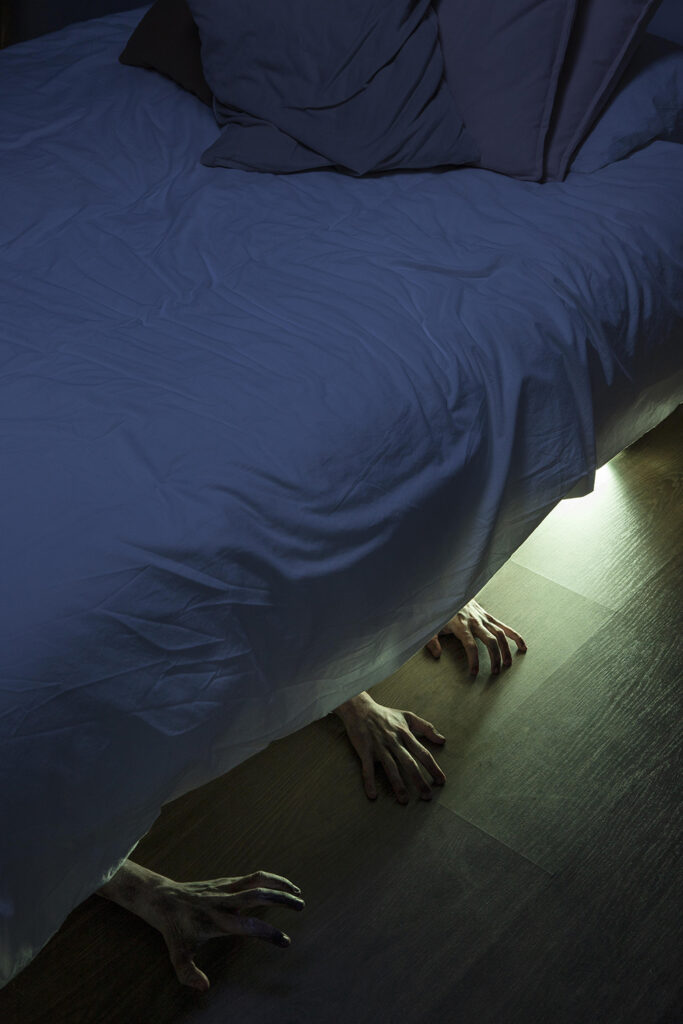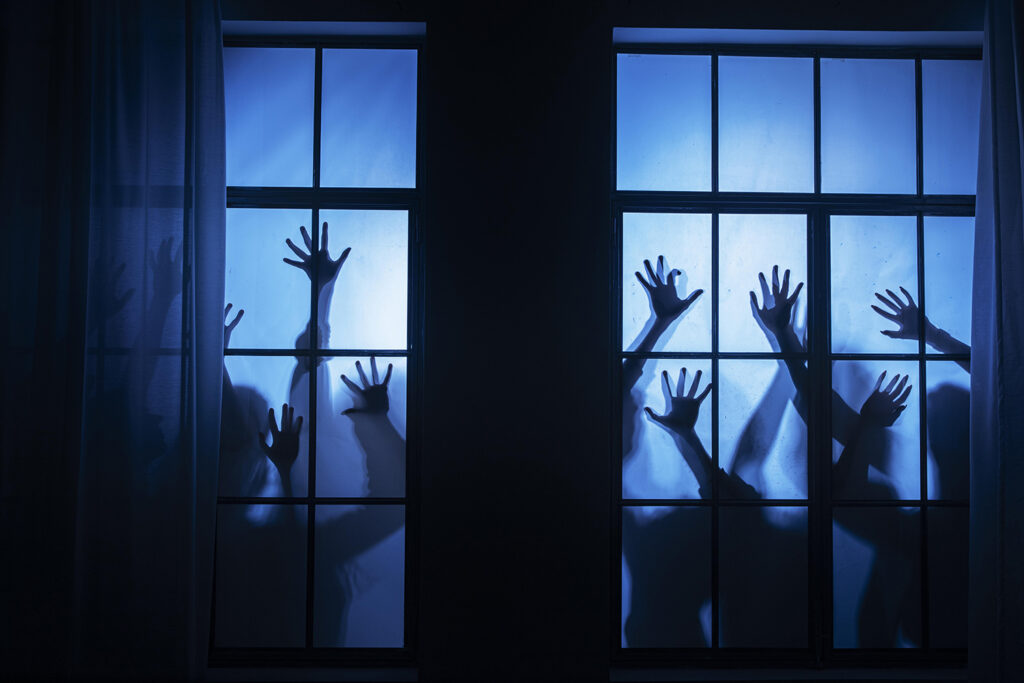By Kai Curry
NORTHWEST ASIAN WEEKLY

Filmmaker Champ Ensminger loves horror movies
Welcome to our second Halloween installment, where we ask movie buffs, Champ Ensminger and Dr. Ungsan Kim, what movies they recommend if you like a scary fix for the holiday. (See part one here.)
Scary is subjective, yet certain films stand out for their ability to have you cowering in your seat. A documentary might be scary, Kim reminds us, yet is not considered a “horror” movie. The horror genre, Kim continued, is divided into subgenres, such as slasher, body horror, supernatural horror, sci-fi horror, torture horror, and occult horror, among others. Kim teaches film at the University of Washington, including courses on Asian horror and Korean film history.
Here are Kim’s recommendations for top five Asian horror films, in his own words*:
Ring (Nakata Hideo, Japan, 1998): The film was a sensation not only in Asia but across the globe. You can find almost all aspects of the horror genre in the film. Gore Verbinski’s U.S. adaptation is also highly recommended. Verbinski’s version is shot in Seattle and its neighboring cities.

Dr. Ungsan Kim
TWOFER! Ensminger also puts these two films in his top five. On the remake, he said, “It holds up as a great take on atmosphere. It helps that it’s set in the Pacific Northwest. Growing up, being a kid going to see that in the theater with my grandpa, it really got under my skin and it helped to draw me into the horror genre…” After watching, Ensminger said, “I couldn’t shower with the curtains completely closed for a long time.”
Pulse (Kurosawa Kiyoshi, Japan, 2001): Those of us who have lived in the early 2000s may understand the contradictory feeling of expectation and anxiety over the rapidly changing digital world and technological advancement. The film captures the angst-ridden turn of the century through the gloomy picture of the world.
A Tale of Two Sisters (Kim Jee-Woon, South Korea, 2003): One of the best Asian horror films ever made. The beautiful mise-en-scène of the film adds pathos to the generally eerie atmosphere. It’s a film about family, hatred, and regret.
Shutter (Banjong Pisanthanakun, Thailand, 2004): I would call this film a last avatar of the personal film camera. Very creative imagination about ghost photographs.
TWOFER! Ensminger also puts this film in his top five.
“It was the big calling card for the director and [concerns] belief in spirits. There’s a photographer who takes pictures, and depending on where he is sent, the photos feature ghosts, or spirits, from a recent accident, or a murder case, or the like.”
Detention (John Hsu, Taiwan, 2019): A sad reflection on the dark history of Taiwan during its martial law period. Similar to A Tale of Two Sisters, the film is full of sad memories and regrets, as well as reflections on transitional justice.
Like Kim, Ensminger has been a fan of horror movies since childhood. As a filmmaker himself, Ensminger pursues storytelling—including Asian storytelling—through diverse formats. “Most definitions of what is gruesome is different across cultures,” Ensminger pointed out, defining “horror” as often containing supernatural or mysterious (perhaps never explained) elements.
Ensminger likes horror movies that contain suspense, and at the same time, “get under your skin,” and have layered meaning, maybe political or racial.
Here are Ensminger’s further recommendations for the scariest Asian films, in his own words:
The Wailing (Na Hong-Jin, Korea, 2016): This movie has been on my top list since I first saw it. It focuses on shamanism and demon possession from a very deep cultural context in Korea. There’s also a lot of social tension and historical trauma embedded around Korean and Japanese relations that, I think, Westerners probably wouldn’t really think about. It’s a stunning and really well done movie.
Kwaidan (Masaki Kobayashi, Japan, 1964): This is an anthology of short Japanese horror stories. The writer of the original short stories, [Lafcadio Hearn], lived in Japan for a long time, translated, and put to paper the folklore stories that he was hearing. So it’s a famous Japanese director who adapted a non-Japanese person’s take on Japanese horror stories. It’s really vivid, the colors are amazing, and the set pieces are really awesome.
The Medium (Banjong Pisanthanakun, Thailand; and Na Hong-Jin, Korea, 2021): Also focuses on shamanism and human possession, like The Wailing, but from the context of Thai culture in northeast Isan province, where there is a very deep seated belief in animism, spirits, and shamanism. The depiction of it is so authentic that it’s like lived culture in Thailand and it’s also just so scary.
Honorable mentions:
Exhuma (Jang Jae-Hyun, Korea, 2024): Three mediums, or modern-day shamans, visit the gravesite of a well-to-do family that is dealing with a haunting. “Like Ghostbusters,” joked Ensminger. The shamans get paid to exercise the spirits from that space, and end up confronting a demon who is a Korean general from the past. “They get more than they bargained for.”
Satan’s Slaves (Joko Anwar, Indonesia, 2017), and Impetigore (Joko Anwar, Indonesia, 2019) are “must-watch movies if you are a horror fan,” said Kim.
Additional recommended U.S. movies that involved at least one Asian cast or filmmaker:
Nope (Jordan Peele, United States, 2022): Starring Steven Yuen. Sci-Fi Horror. UFOs.
TWOFER! Kim also gives a nod to Peele’s Get Out (2017), which does not have an Asian cast.
“The horror genre always wavers between fantasy and reality. The film shows the real terror a certain group of people has to face in our society.”
The Conjuring series (James Wan, United States/Australia, various dates): Supernatural. Paranormal. Hauntings.The Saw series (James Wan, United States/Australia, various dates): Psychological Horror. Serial Killer. Torture.
Finally, Ensminger recommended keeping an eye out for Japanese director and horror film master, Kiyoshi Kurosawa’s, next film. This will be a samurai movie, or of the genre called jidaigeki, set in a castle, with a closed-in, claustrophobic atmosphere.
*All films listed, at the time of publication of this article, could be watched on at least one digital platform, either for free or for a charge.
Kai can be reached at newstips@nwasianweekly.com.




